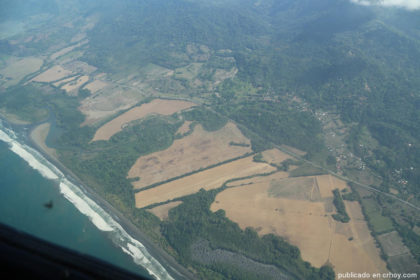
MSP
Drug traffickers have free reign over the skies of Costa Rica –especially throughout the Pacific Zone- with the dozens of clandestine airstrips, key elements to transport drugs and money.
After the discovery of 35 clandestine airstrips between November and March, the Ministry of Public Security (MPS) has started to close them temporarily or permanently.
Some are on private property, and the owners were notified. The Civil Aviation Law has a series of requirements. If they are not met, the Air Surveillance Service (SVA), the Public Ministry and the Judicial Investigation Organization (OIJ) can close the airstrips,”
said Gustavo Mata, Security Minister.
Authorities located 18 airstrips in North Pacific, 8 in the South Pacific and 7 in the Central Pacific. They closed 4 airstrips permanently and another 2 were closed temporarily. In some cases, landowners did not even know their properties were used as landing fields.
This week, the MSP began the third stage: disabling tracks in Santa Cruz, Tamarindo, Flamingo, Cabo Velas, Río Canas, among others.
It’s not surprising that the users of the tracks are Mexican drug traffickers. The SVA identified a route between Mexico and Costa Rica used for refueling, money transfers and uploading drugs.
Luis Vargas, director of SVA, said these are furtive, low-altitude flights, so not all radars can detect them, even with the latest technology available.